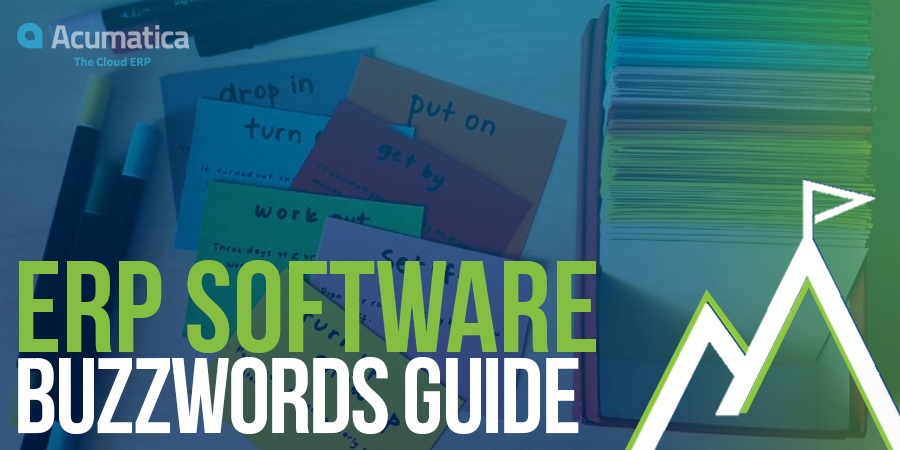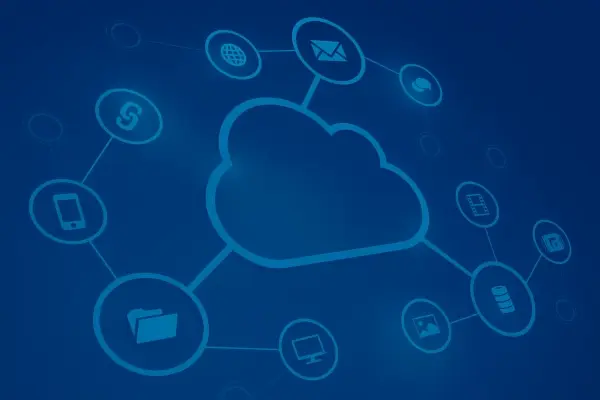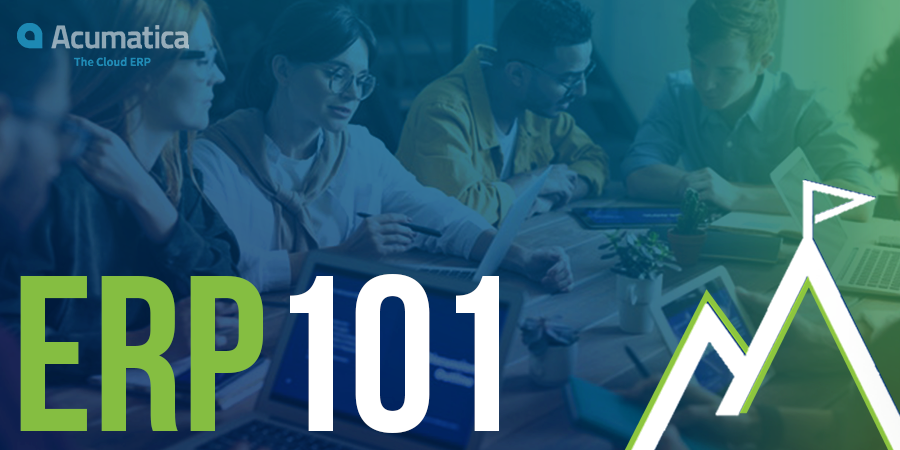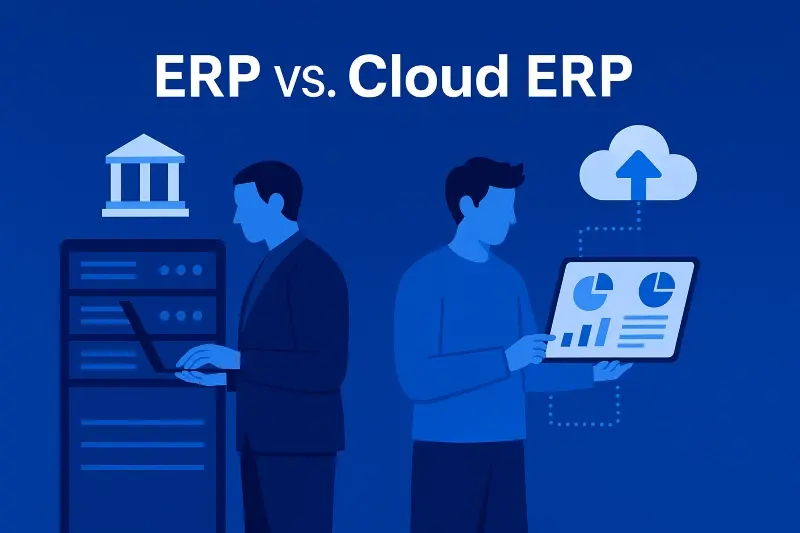The Benefits of Cloud ERP Software: Flexibility, Savings, and Security
Updated 9/1/25 Cloud ERP isn’t just another business tool—it’s the cornerstone of digital transformation. The phrase gets tossed around often, but...
4 min read
The Milestone Team 8/10/23 9:30 AM

ERP terms and jargon shouldn’t slow you down on your ERP journey. Whether you’re exploring solutions for the first time or trying to get more value from your current system, the language can be confusing—especially when terms get tossed around like everyone already knows them. In this guide, you’ll find explanations of the most-asked-about ERP terms.
your software and data run in secure provider data centers you reach over the internet, not on servers in your building. The provider handles the hardware, power, backups, and updates so your team focuses on using the system—not maintaining it. You pay for what you need and can scale up or down without buying equipment.
Skip the servers: no hardware purchases, patching, or replacements; updates and security fixes happen for you.
Stay resilient: automatic backups and the ability to switch to a standby environment (failover) reduce downtime.
Work from anywhere: browser or mobile access keeps office and field teams on the same live data.
Scale on demand: add storage or computing power in minutes for busy seasons, new locations, or acquisitions.
The cloud lets you trade hardware headaches for on-demand capacity, built-in resilience, and simple access from anywhere.
SaaS - Software you subscribe to and use in a web browser. The vendor hosts and secures it, handles updates and backups, and keeps everyone on the same current version. You get predictable subscription pricing and access from anywhere without managing servers or installs.
Launch fast: provision users, import data, and go—no local installs or weekend patching.
Always up to date and secure: the provider handles updates, security fixes, and backups; uptime SLAs and audit logs are standard.
Predictable cost and easy scale: add or remove users/modules as needed; avoid hardware purchases and refresh cycles.
Examples: Microsoft 365, Google Workspace, DocuSign, Salesforce, Acumatica (cloud ERP
With SaaS, the infrastructure is included—one subscription, one login, and your team is always on the latest, secure version.
IaaS (Infrastructure as a Service) — rent virtual servers, storage, and networking instead of buying hardware. You control what runs on those servers (OS, databases, apps); the provider runs the data centers.
You manage apps; provider manages the data centers
Flexible capacity without hardware purchases
Good for custom/legacy apps and deeper IT control
Usually included with SaaS: infra cost is baked into most SaaS subscriptions; buy IaaS only if you host the app yourself (private cloud)
Examples: AWS, Azure, Google Cloud
With true SaaS, you’re already paying for the infrastructure behind the scenes—choose IaaS only when you plan to self-host.
ERP (Enterprise Resource Planning) is a software solution that runs the business end-to-end on one unified system and database (platform), so every team relies on the same numbers and up-to-date information.
Single source of truth: customers, vendors, items, and accounts stay synchronized—eliminating data silos and inconsistencies.
Less re-entry: orders, inventory, and purchasing flow directly into finance to streamline processes and reduce manual entry.
Real-time visibility: role-based dashboards and reports provide faster answers and clearer insights for decision-makers at every level.
Replaces disconnected tools: one connected platform instead of multiple separate apps and spreadsheets improves collaboration, accuracy, and efficiency.
Modern ERP systems centralize core functions so organizations make better decisions, operate more efficiently, and scale with confidence.
The accounting foundation of your ERP that keeps the books accurate, controlled, and up to date. Core financials handle how money is recorded, approved, and reported—everything else (sales, inventory, projects) rolls into this layer so your statements match reality.
What’s included: General Ledger (GL), Accounts Payable (AP), Accounts Receivable (AR), Cash Management/Bank Recs, and Fixed Assets.
One source of truth: subledgers post to the GL in real time, so financials reflect the same numbers across teams.
Controls that stick: period locks, approvals, audit trails, and role-based access keep entries clean and traceable.
Reporting ready: produce financial statements, budgets, and KPIs by dimension (department, project, location) without spreadsheet wrangling.
With solid core financials, your statements are trustworthy, your controls are enforced, and month-end moves faster.
CRM is one place to track every customer and every touchpoint—from first marketing response to quote, deal, onboarding, and support—so sales, marketing, and service work from the same record.
What it tracks: leads, contacts, accounts, opportunities/deals, quotes, activities, and support cases.
Complete timeline: emails, calls, meetings, tasks, and notes in one view for each account or contact.
Pipeline & forecasting: see deal stages, probabilities, expected close dates, and revenue so leaders can coach and plan.
Smooth handoffs: data flows from marketing → sales → service without retyping; integrations keep ERP, e-commerce, and support tools in sync.
With CRM, everyone sees the same history and next steps—fewer dropped balls, clearer forecasts, and faster follow-through.
ERP Implementation is the project of setting up an ERP system so it fits how your business actually works—while improving those workflows along the way.
Configure the system: activate the right modules; set up chart of accounts, dimensions, workflow rules, and approvals to match your processes.
Migrate clean data: import the chart of accounts, customers, vendors, items, and opening balances—fixing duplicates and bad codes on the way in.
Establish controls: implement roles/permissions, period locks, audit trails, and simple automations so entries stay clean and consistent.
Prove & train: run pilot tasks in a test environment, close gaps, and deliver focused user training so day one feels familiar.
When done well, implementation delivers trusted data, smoother daily work, and faster decisions from day one
Let the system handle repeat work and make helpful suggestions. Automation removes manual steps; AI/ML learns patterns in your data to speed tasks and catch issues early.
Take the busywork off your team: auto-code vendor bills, match POs/receipts/bills (3-way match), route approvals, and post from connected apps.
Smarter suggestions: propose likely GL accounts, dimensions, or approvers; recommend next best action for sales or service.
Catch problems early: flag anomalies, duplicates, or out-of-policy spend before posting; surface exceptions for review.
Shorten cycles: faster invoice processing, reconciliations, and month-end close with fewer clicks and fewer errors.
Learn and improve: user corrections train the system so recommendations get better over time.
Automation and AI turn routine tasks into reliable, low-touch workflows—so your team spends time on analysis, not rework.
Secure, self-service websites tied to your ERP so customers, vendors, and employees can get what they need without emailing your team. Data flows directly to and from your system, keeping information current at the source.
For customers: view/pay invoices, download statements, track orders/shipments, open support cases.
For vendors: receive POs, submit invoices, upload documents, check payment status and remittances.
For employees: enter time and expenses, update HR details, view pay info and schedules.
Live ERP data: changes sync instantly—no rekeying, fewer errors, better visibility.
Access control: logins and permissions ensure each audience only sees their own information; actions are tracked.
With portals, users get what they need directly from the ERP, which means fewer emails and cleaner data.
We covered the core pieces: Cloud, SaaS vs. IaaS, what ERP actually does, Core Financials, CRM, Implementation, Automation/AI, and Portals. You also know what’s bundled with SaaS and when infrastructure is a separate line item. Hopefully these definitions gave you a better understanding of some of the most common buzzwords used in the ERP world.

Updated 9/1/25 Cloud ERP isn’t just another business tool—it’s the cornerstone of digital transformation. The phrase gets tossed around often, but...

ERP (Enterprise Resource Planning)—sometimes called business management software or even advanced accounting software—is the system that keeps modern...

Understanding ERP vs Cloud ERP Every business runs on processes like finance, supply chain, projects, payroll, and reporting. When those processes...